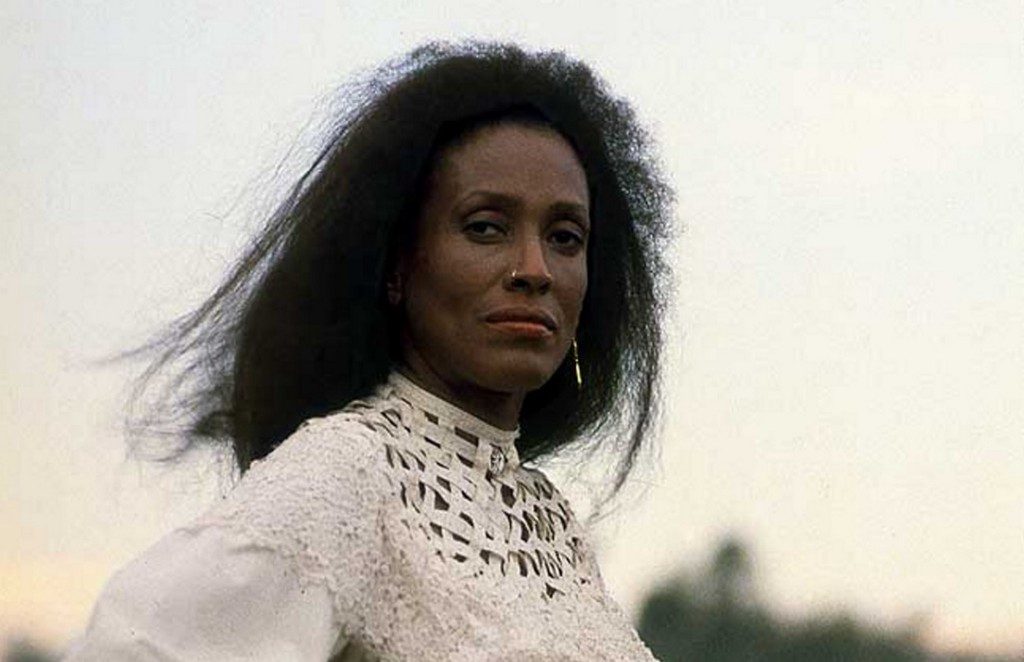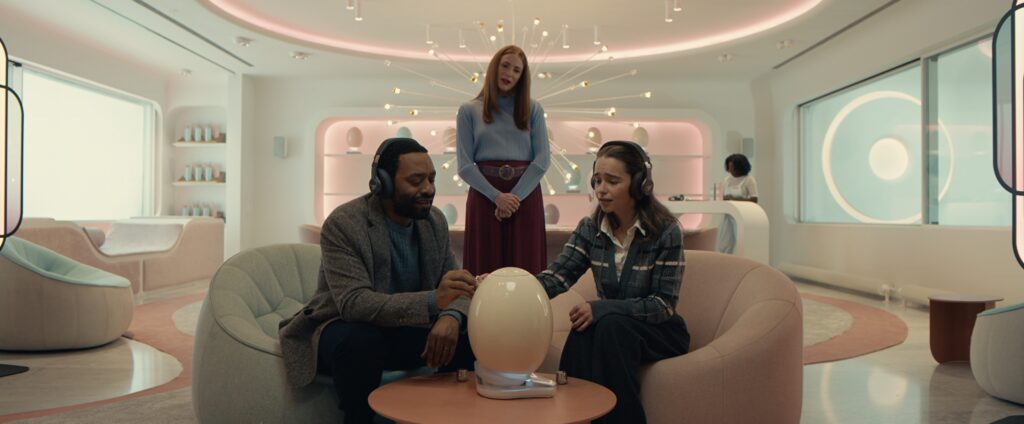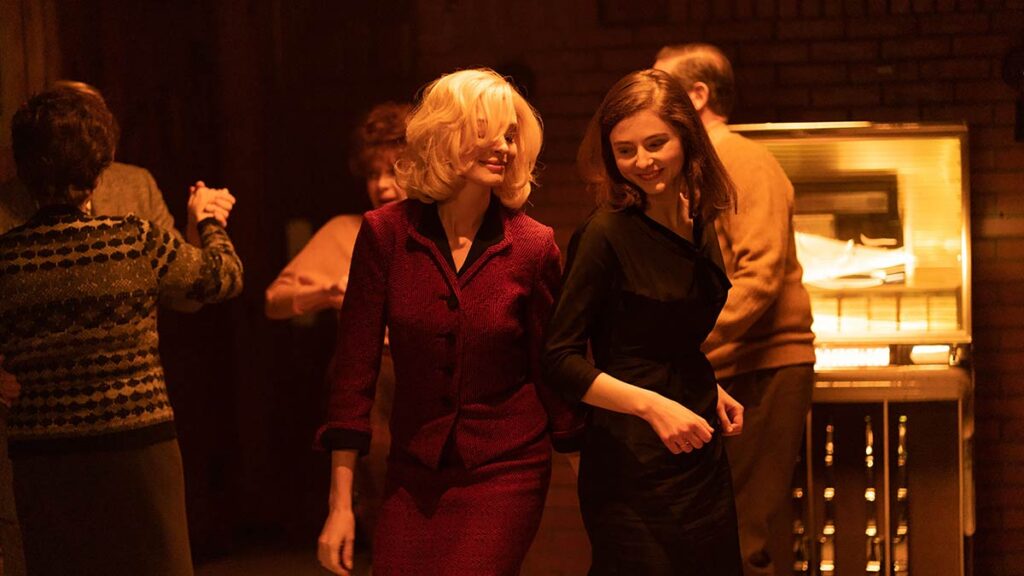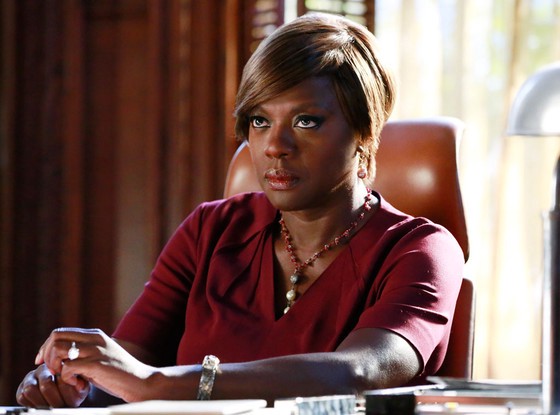
In many ways, 2016 was a terrible year, and with President-elect Donald Trump and Vice President-elect Mike Pence en route to the White House, the next four years are going to be especially tough on women, people of color, LGBTQ folks, and basically everyone who isn’t a rich, straight, and able-bodied white man. But some great things happened in this shit-fest of a year. Here are some of 2016’s most exciting moments and milestones that the Women and Hollywood team is celebrating as the year comes to a close.
Ava DuVernay’s Continued Ascent
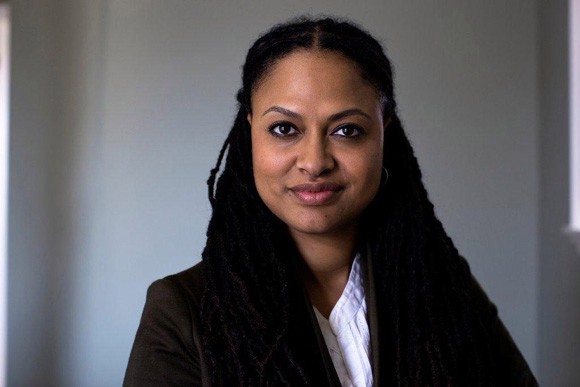
It truly does feel like the year of Ava DuVernay, doesn’t it? Her first TV series, “Queen Sugar,” premiered on OWN with a directorial pool made up entirely of women. Her documentary “13th” became the first non-fiction film to open the New York Film Festival, and has been shortlisted for the Academy Awards. But DuVernay’s biggest achievement might be the fact that she’s the first woman of color to helm a live-action feature with a budget over $100 million. By directing Disney’s sci-fi feature “A Wrinkle in Time,” DuVernay is making history, and we’re pretty sure we’re going to be seeing her around come Oscar season 2017, too.
“Ghostbusters’” Meta-Commentary
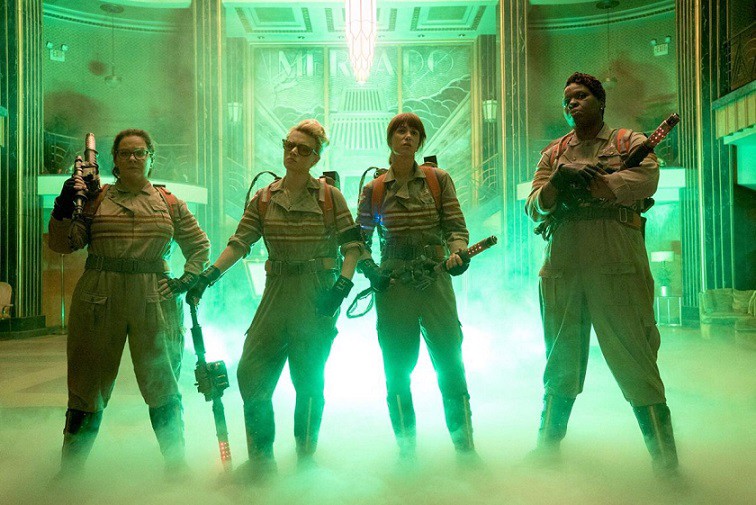
The internet got to play itself in “Ghostbusters” when the team read a YouTube comment that said: “Ain’t no bitches gonna hunt no ghosts.” True, it seemed like the entire MRA-filled ‘net seemed to believe that. But “Ghostbusters” was aware of the criticisms aimed at it and instead turned the film into an anti-MRA, feminist manifesto.
Not only did these “bitches” hunt and take down ghosts to save the world, their villain was a man who felt entitled to ruling the world because it hadn’t given him everything he wanted. Ultimately, it was female empowerment and friendship that saved the day. While the trolls haunted the film, and star Leslie Jones, long after the its debut, “Ghostbusters” itself stands as a commentary on MRA culture and female badassery.
Actresses Continue to Speak Out About Inequality
Hollywood heavyweights continued to weigh in on sexism and racism in the industry this year, adding their voices to vitally important dialogues.
Jennifer Aniston penned a candid essay for The Huffington Post, where she addressed the relentless scrutiny she’s faced regarding her physical appearance, marital status, and womb. “I don’t like to give energy to the business of lies, but I wanted to participate in a larger conversation that has already begun and needs to continue,” the “Office Christmas Party” actress wrote. As one of the biggest stars worldwide, Aniston’s contribution to the conversation was bound to make headlines, and she did not hold back. Instead, she used her public platform to make her case loudly and clearly: the media treats women in the spotlight like garbage and perpetuates both unrealistic beauty standards and constricting, retrograde narratives about what constitutes as a successful woman.
Mila Kunis also shared some of her own shitty experiences in the business and challenged the status quo. A producer pressured her to pose semi-naked on the cover of a men’s magazine to promote their film, and told her that she’d “never work in this town again” if she rejected the offer. “The film made a lot of money and I did work in this town again, and again, and again,” Kunis wrote in an essay. “What this producer may never realize is that he spoke aloud the exact fear every woman feels when confronted with gender bias in the workplace,” she explained. “It’s what we are conditioned to believe — that if we speak up, our livelihoods will be threatened; that standing our ground will lead to our demise. We don’t want to be kicked out of the sand box for being a ‘bitch.’ So we compromise our integrity for the sake of maintaining status quo and hope that change is coming.”
Gabrielle Union used a magazine interview to discuss “that sense of being hyper-visible or invisible on sets,” zeroed in on, or ignored as a woman of color. Union asked, “When do you stand up and point out every micro-aggression, and when do you stand down so you’re not the angry black person all the time? It’s tiring,” she explained. It feels like another job that you’re not getting paid for — that is all encompassing.”
Happily, Aniston, Kunis, and Union are just three of many, many more actresses who have come forward to bravely speak out on these issues.
Rose McGowan Calls Out Hollywood’s Everyday Misogyny
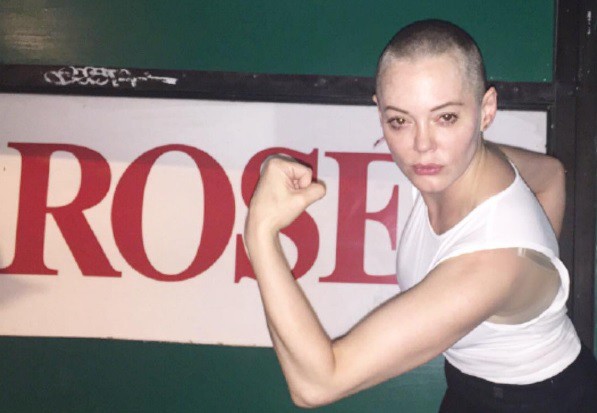
We have to single out one actress in particular for her work in combating Hollywood’s bullshit. If only there were more outspoken activists like Rose McGowan: She is the rare public figure who talks the talk and walks the walk. When Variety’s Owen Gleiberman publicly ans thoughtlessly shared how Renée Zellweger’s rumored cosmetic surgery affected him, McGowan did what every woman in Hollywood should have done (or possibly wanted to do): She used her position and stood up for Zellweger with her own op-ed in The Hollywood Reporter.
Also, after revealing that a studio head raped her, McGowan shared a gutsy post on Twitter, unambiguously shaming those in the industry who continue to work with known offenders. “Stop rewarding sociopaths,” McGowan demanded in her post. “Every time you sanction abhorrent behavior, you are aiding and abetting a crime, that makes you no better than the criminal.”
Her words will likely continue to strike a chord, if the recent comebacks of Mel Gibson and Casey Affleck are any indication. When doubletalk and hypocrisy run supreme, as they so often do in show business, it’s nice to know there are people willing to draw a line in the sand. McGowan is one of them.
The Academy Remakes the World for Women Directors
Back in June, The Academy, which has come under incredible scrutiny over that last couple of years due to the lack of diversity in its acting nominees, among many other issues, announced that it had tapped a total of 683 new members. This is an increase from 322 last year.
This class is way more inclusive than in the past. Forty-six percent of the invitees were women, and 41 percent were people of color. And while those numbers are eye-popping, the fact is that the number of women will only increase from 25 percent to 27 percent, and the number of people of color will just increase from eight percent to 11 percent. This shows just how far this body still needs to go.
Before the overhaul, 408 people were in the directing branch, and just 39 of them were women. The Academy added 52 women, more than doubling the amount of women that were in the branch.
During awards season, it’s hard for women-directed films to rise above the din. Part of the issue is that there is less investment in them. Part of it is that the mostly male branch has nominated just four women in the life of the Academy. Let me say that again: just four women have ever been nominated for an Academy Award for best director. Women directors have won for their foreign language films, docs, shorts, animation etc., but in the directing branch women have been virtually shut out.
We’re cautiously optimistic about the Academy’s future. This is a major shakeup, and we hope the changes are reflected in the nominations sooner than later. That being said, we don’t really expect a woman director to be nominated this year — we can only hope.
Historical High for Black Female Characters on TV
“Broadcast programs became more racially/ethnically diverse in 2015–16,” a report from Dr. Martha Lauzen and The Center for the Study of Women in Television and Film revealed. “Seventy-one percent of females were white (down six percentage points from 77 percent in 2014–15), 17 percent were black (up two percentage points from 15 percent), five percent were Latina (up two percentage points from three percent), five percent were Asian (up one percentage point from four percent), and two percent were of some other race or ethnicity (up one percentage point from one percent). It should be noted that black females reached a recent historical high in 2015–16 and that they are the only female characters of color to experience incremental but steady gains over the last few years.”
We couldn’t be more happier to see more black women on TV — series like “Empire,” “How to Get Away with Murder,” and “Black-ish” showcase black actresses in starring roles. While it’s rare to see women at the center of stories, it’s unfortunately much rarer to see women of color at the center of stories. It’s disheartening to realize that other female characters of color aren’t making steady gains, but we all know there’s still major progress needed. It is our hope that 2017 will see a more inclusive small screen.
Jill Soloway is Toppling the Patriarchy
“Transparent” is one of the only shows with characters that explicitly discuss gender. So, it’s no surprise that series creator Jill Soloway used two high-profile forums — a Toronto International Film Festival master class and her Emmys acceptance speech — to publicly address feminism. During her keynote address at TIFF, Soloway explained her version of what constitutes the female gaze, while using the Laura Mulvey-coined male gaze as context. After joking that she now “owns” the concept, Soloway described the female gaze as the camera feeling, not solely seeing.
In her less academic, but just as passionate speech at the Emmys, Soloway symbolically dropped the mic with, “Topple the patriarchy!” Which, really, is a statement that speaks for itself. We commend Soloway for openly discussing the many facets of feminism in an accessible manner. We need more people like her — those willing to publicly call themselves feminists, demand progress, and stand up for their convictions.
Issa Rae Finally Gets Her Own TV Show
“Insecure” is amazing, one of the best shows of 2016. What’s unfortunate is how long it took for creator-star Issa Rae to finally land the TV project she so deserves. Rae proved her mettle as a unique, creative voice with her beloved web series “The Misadventures of Awkward Black Girl” and a best-selling memoir of the same name. As the web series created buzz, rumors of Rae’s new projects on broadcast TV surfaced but never came to fruition.
“I Hate LA Dudes,” a show Rae pitched to Shonda Rhimes and Betsy Beers didn’t work out, and getting the very white HBO to take a serious interest in the casually black “Insecure” was long battle, one that took at more than three years. (This despite the company’s sinking money into yet another big-budget story about a tortured asshole. Looking at you, “Vinyl.”)
For a while, it seemed like Rae wasn’t going to get a creative outlet unless she produced, financed, and distributed it all on her own. But, luckily for us and for her, that didn’t happen. “Insecure” recently aired its season finale and was renewed for a second season. It took a long time, too much time, for Rae to find her big, post-”Awkward Black Girl” project, but her talent proves it was worth the wait.
“Daughters of the Dust,” “The Watermelon Woman,” and “Desert Hearts” Receive Theatrical Re-Releases
In a boon for black, queer, and feminist cinema, Julie Dash’s “Daughters of the Dust,” Cheryl Dunye’s “The Watermelon Woman,” and Donna Deitch’s “Desert Hearts” all received theatrical re-releases in 2016, finally gaining the long overdue attention they deserve. “Daughters of the Dust” (1991), about the creole Gullah women in the Peazant family, was re-released in November. It’s probably most recognizable now for being an influence on Beyoncé’s “Lemonade,” but it originally made headlines by being the first U.S. feature film directed by a black woman.
Also re-released in November was “The Watermelon Woman” (1996), a genre-mixing, meta film about director Cheryl Dunye, her passion for filmmaking, and her discovery of the mysterious black actress known as the Watermelon Woman. “The Watermelon Woman” will also be released on DVD and VOD January 31.
“Desert Hearts” (1986) was adapted from Jane Rule’s 1964 novel and tells the story of Vivian Bell who travels to Reno in order to file a divorce. While staying at a local ranch, Vivian finds she is attracted to another woman, much to her surprise. Thirtieth anniversary screenings of “Desert Hearts” played at the MoMA for a week in early December.
It’s heartening to see groundbreaking films from black, female, and queer voices gaining recognition and being introduced to a new generation of film fans. Kudos to Dash, Dunye, and Deitch. Here’s hoping 2017 brings even more unknown, feminist trailblazing films back to theaters.
Check out more of our end of year coverage:
The Best Women-Directed Films of 2016: “American Honey,” “The Fits,” & More
